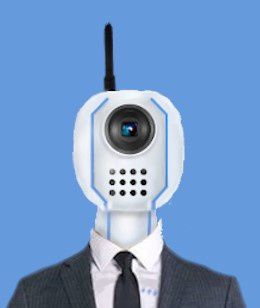Reminds me of an early application of AI where scientists were training an AI to tell the difference between a wolf and a dog. It got really good at it in the training data, but it wasn’t working correctly in actual application. So they got the AI to give them a heatmap of which pixels it was using more than any other to determine if a canine is a dog or a wolf and they discovered that the AI wasn’t even looking at the animal, it was looking at the surrounding environment. If there was snow on the ground, it said “wolf”, otherwise it said “dog”.
Early chess engine that used AI, were trained by games of GMs, and the engine would go out of its way to sacrifice the queen, because when GMs do it, it’s comes with a victory.
It’s not wrong
Reg, why’d you just stab yourself in the shoulder?
Ah cmon, ain’t ya ever seen a movie?
Well of course I’ve seen a movie, but what the hell are ya doing?
Every time the guy stabs himself in a movie, it’s right before he kicks the piss outta the guy he’s fightin’!
Well that don’t… when that happens, the guys gotta plan Reg, what the hell’s your plan?
I dunno, but I’m gonna find out!
Why would you use AI for chess?
You don’t use it for the rule-set and allowable moves, but to score board positions.
For a chess computer calculating all possible moves until the end of the game is not possible in the given time, because the number of potential moves grows exponentially with each further move. So you need to look at a few, and try to reject bad ones early, so that you only calculate further along promising paths.
So you need to be able to say what is a better board position and what is a worse one. It’s complex to determine - in general - whether a position is better than another. Of course it is, otherwise everyone would just play the “good” positions, and chess would be boring like solved games e.g. Tic-Tac-Toe.
Now to have your chess computer estimate board positions you can construct tons of rules and heuristics with expert knowledge to hopefully assign sensible values to positions. People do this. But you can also hope that there is some machine learnable patterns in the data that you can discover by feeding historical games and the information on who won into an ML model. People do this too. I think both are fair approaches in this instance.
You can calculate all possible moves in milliseconds on any silicone these dsys
All possible moves one step from a given position sure.
But if you then take all possible resulting positions and calculate all moves from there, and then take all possible resulting positions after that second move and calculate all possible third moves from there, and so on, then the possibilities explode so much in number that you can’t calculate them anymore. That’s the exponential part I was refering to.
You can try and estimate them roughly, let’s say you’re somewhere in the middle of the game, there are 12 units of each side still alive. About half are pawns so we take 1.2 possible moves for them, for the others, well let’s say around 8, thats a bit much for horses and the king on average, but probably a bit low for other units. So 6 times 8 and 6 times 1.2, lets call it 55 possibilities. So the first move there are 55 possible positions, for the second you have to consider all of them and their new possibilitues so there are 55 times 55 or 3025, for the third thats 166375, then 9.15 million, 500 million, 27.6 billion, 1.5 trillion etc. That last one was only 7 moves in the future. Most games won’t be finished by then from a given position, so you either need a scoring function or you’re running out of time.
Yep, those are the moves that can all be easily calculated very quickly on modern hardware
There are more possible chess moves (estimated at 10^120 for an average game) than there are atoms in the observable universe (estimated at 10^80). That is to say the number of possible chess moves has 40 more zeros on the end than the number of atoms in the observable universe.
Can you point to some souce showing how modern hardware can work these out easily?
No, they can’t
That’s funny because if I was trying to tell the difference between a wolf and a dog I would look for ‘is it in the woods?’ and ‘how big is it relative to what’s around it?’.
What about telling the difference between a wolf and grandmother?
Look for a bonnet. Wolves don’t wear bonnets.

Yeah, that’s a grandmother, so what?
I can confirm this. I’m not a wolf expert, or even seen that many wolves really, but I have a dog and I don’t think she’d wear a bonnet.
Hot dog. Not hot dog
While I believe that, it’s an issue with the training data, and not the hardest to resolve
Maybe not the hardest, but still challenging. Unknown biases in training data are a challenge in any experimental design. Opaque ML frequently makes them more challenging to discover.
The unknown biases issue has no real solution. In this same example if instead of something simple like snow in the background, it turned out that the photographs of wolves were taken using zoom lenses (since photogs don’t want to get near wild animals) while the dog photos were closeup and the ML was really just training to recognize subtle photographic artifacts caused by the zoom lenses, this would be extremely difficult to detect let alone prove.
Exactly.
The general approach is to use interpretable models where you can understand how the model works and what features it uses to discriminate, but that doesn’t work for all ML approaches (and even when it does our understanding is incomplete.)
So is the example with the dogs/wolves and the example in the OP.
As to how hard to resolve, the dog/wolves one might be quite difficult, but for the example in the OP, it wouldn’t be hard to feed in all images (during training) with randomly chosen backgrounds to remove the model’s ability to draw any conclusions based on background.
However this would probably unearth the next issue. The one where the human graders, who were probably used to create the original training dataset, have their own biases based on race, gender, appearance, etc. This doesn’t even necessarily mean that they were racist/sexist/etc, just that they struggle to detect certain emotions in certain groups of people. The model would then replicate those issues.
I bet ML would also think people with glasses are smarter or some dumb thing like that.
Yes, “Bias Automation” is always an issue with the training data, and it’s always harder to resolve than anyone thinks.
Old data adage. Garbage in, garbage out.
Actually, in this case the data sounds pretty clean.
The idea of AI automated job interviews sickens me. How little of a fuck do you have to give about applicants that you can’t even be bothered to have even a single person interview them??
But god forbid the applicant didn’t spend hours researching every little detail about a company, writing a perfect letter with information that could have just been bullet points and being able to explain exactly why they absolutely love the company and why it’s been their dream to work there since they were a child. Or even worse: Use AI to write the application.
Cover letters fucking make me hateful. I love generating AI cover letters and sending them. Fuck your cover letters in a market where you need to send 100 applications to get 10 bites
We should build an AI that automates researching about a company for applicants
The real “No U” of AI…
Exactly!
Applicants are expected to dedicated hours of their time to writing their application and performing background research - both of which are becoming increasingly more tedious over time - so the least a company could bloody do is show some basic respect by paying an actual human being to come interview you!
That’s more like an excuse to keep those stupid 5, 6, and even more interview round processes. Basically making you work an entire week for free in exchange of a chance of getting an offer. Make the first or second rounds with AI and only bother after that.
I dunno, but if your boss chain contains a machine (literally Amazon warehouse), does it matter?
“Bias automation” is kind of an accurate description for how our brains learn things too.
The base assumption is that you can tell anything reliable at all about a person from their body language, speech patterns, or appearance. So many people think they have an intuition for such things but pretty much every study of such things comes to the same conclusion: You can’t.
The reason why it doesn’t work is because the world is full of a diverse set of cultures, genetics, and subtle medical conditions. You may be able to attain something like 60% accuracy for certain personality traits from an interview if the person being interviewed was born and raised in the same type of environment/culture (and is the same sex) as you. Anything else is pretty much a guarantee that you’re going to get it wrong.
That’s why you should only ask interviewees empirical questions that can identify whether or not they have the requisite knowledge to do the job. For example, if you’re hiring an electrical engineer ask them how they would lay out a circuit board. Or if hiring a sales person ask them questions about how they would try to sell your specific product. Or if you’re hiring a union-busting expert person ask them how they sleep at night.
But all the other questions are to find out if they are a good fit for the office culture.
You know, if they are also white middle class dude bros.
I’ve just started doing practical interviews. I basically get really young people with little overall experience and I just want to know if they can do common technical tasks.
So one question is to literally have them explain how to tighten a bolt. One person failed.
To be fair, that’s a very open ended question. I mean, what kind of bolt are we talking about? A standard lag bolt? If so you don’t tighten it! That’d be a trick question! You tighten the nut. Same thing applies with car wheel bolts. Tricky tricky!
Is it a hex bolt that also has a cross head? How tight are we talking?
I’m just going to assume bolts of lightning and Usain Bolt are off the table.
Not really in a bolt tightenning domain, but I have done technical interviews for a lot of devs including junior ones, and them asking all those questions about the task is something I would consider a very good thing.
At least in my domain the first step of doing a good job is figuring out exactly what needs to be done and in what conditions, so somebody who claims to have some experience who when faced with a somewhat open ended question like this just jumps into the How without first trying to figure out the details of the What is actually a bad sign (or they might just be nervous, so this by itself is not an absolute pass or fail thing).
I’m just going to assume bolts of lightning and Usain Bolt are off the table.
The only thing I know about the procedure for tightening Usain Bolt is that I am not part of performing it.
I did actually make the mistake of asking just “which way do you turn a screw” once and the person had the sense to ask “to tighten or loosen it?”
Would you have accepted “righty tighty lefty loosely”?
Yeah but if they don’t show which is which I ask them to show too.
Almost everyone gets screw turning right, it just weeds out a few people who say the right things in emails.
That’s why you should only ask interviewees empirical questions that can identify whether or not they have the requisite knowledge to do the job.
Hol up. ThAt sOuNds LiKe RaCisM!
That shit works IRL too. Why do you think therapy practices often have themselves positioned in front of a wall of books? Not that it’s a bad thing; it’s good for outcomes to believe your therapist is competent and well educated.
Maybe true but your comment is humanizing “dumb” AI.
There’s a ton of great small scale things we can do with machine learning, and even LLM.
Unfortunately, it seems the main usages will be crushing people down even more.
Neofeudalism
Technobarbarism
Cyber-savagery
Yup. AI should be used to automate all of the mundane day-to-day BS, leaving us free to practice art, or poetry, or literature, or study, or just do leisure activities. Because all of the mundane BS is automated, so we don’t need to worry about things like income or where our next meal comes from. But instead, we went down the dystopian capitalist timeline, where we’re automating all of the art so artists are forced to get mundane day-to-day BS jobs.
Removed by mod
Bit it does if you Photoshop a bookshelf in your background?
That reminds me of the time, quite a few years ago, Amazon tried to automate resume screening. They trained a machine learning model with anonymized resumes and whether the candidate was hired. Then they looked at what the AI was looking at. The model had trained itself on how to reject women.
Another similar “shortcut” I’ve heard about was that a system that analyzed job performance determined that the two key factors were being named “Jared” and playing lacrosse in high school.
And, these are the easy-to-figure-out ones we know about.
If the bias is more complicated, it might never be spotted.
Someone should build a little AI app that scrapes a job listing, then takes a resume and rewrites it in subtle ways to perfectly match the job description.
Let your AI duke it out with their AI.
When I got out of the military, my outprocessing included a briefing about how to get interviews with federal organizations. One thing they taught us was that you can copy the job description, paste it into your resume, and set the font to white. The automated systems at USA Jobs would register a match to the job description and rate you as a better candidate and the human screeners were so overworked that they would just go with what the computer says without checking.
I wonder if this still works lol that’s brilliant.
Some places, yeah. But some of the screening tools have grown more sophisticated now that the information about copying and pasting the listing has made its way to the public.
Pretty sure I saw that somewhere actually.
Edit: Top 5 List - https://www.tomsguide.com/features/i-tested-5-ai-resume-builders-to-help-get-a-job-heres-how-they-fared
I’m looking for a job now, and this is very useful to me. Thank you.
Do you really want to work for a company that allows their HR department to abuse AI as a tool?
Yes? They’ve got a million bazillion applicants too; this is a huge market failure all around.
Explain how anyone has a choice, especially in the United States
deleted by creator
That exists
One of my favorite examples is when a company from India (I think?) trained their model to regulate subway gates. The system was supposed to analyze footage and open more gates when there were more people, and vice versa. It worked well until one holiday when there were no people, but all gates were open. They eventually discovered that the system was looking at the clock visible on the video, rather than the number of people.
Just an expensive timer.
Reminds me of the time a military algorithm was accidentally trained to conclude that tanks are only concealed in tree lines on overcast days.
I do that shit when I have a web interview. Put up a guitar just visible in the camera, a small bookshelf, a floor lamp, make sure my tennis bag is visible despite not playing in ages…
Whether they realize it or not, people do take this stuff in. Not sure why some algorithm based on these very same interviews wouldn’t do the same.
I did the same, but they were not impressed by my Obedience extreme sex bench 5000 with restraint straps. I even told them the sturdy bench is made of durable, heavy-duty steel, capable of supporting up to 400 pounds of weight.
smh.
I’d have hired you. At least I know you’d be honest and not try to hide shit for fear of embarrassment.
And takes well-informed (buying) decisions with a high focus on quality.
deleted by creator
Journalist doing reports in front of their dildo collection: “hold my beer”
Tennis bag? Oh, right. America.
America? Maybe Britain?
Maybe. But why tennis bag?
Play tennis
Ya
To be fair, this works with humans, too.
Hence the comment about “bias automation”
AI reflects its training data??? Shocking!
Yes, contradicting the claim that it’s “more objective”.
Recruiters: “people are using AI to apply! Shame on those lazy wage slaves!”
Also recruiters:
I fucking hate that extraversion is a measured trait 🙄
I hate that they think bookshelves are an indicator for it
It’s from the OCEAN model of personality, which is currently the most widely accepted model. It’s received less criticism than myers-briggs and astrology.
It’s received less criticism than myers-briggs and astrology.
That’s not a high bar to meat.
is it a high bar to vegetable? i would simply downvote but there is no option
Of course it isn’t. Measuring personality is impossible. All personality models are wrong, and they always will be.
deleted by creator
Removed by mod
One web LLM I was screwing around with had Job Interview as a preset. Ok. Played it totally straight the first time and had a totally positive outcome. Thought the interviewer way too agreeable. The next time I said the most inappropriate stuff I could imagine and still the interviewer agreed to come home with me to check out the rock collection I keep under my bed and listen to Captain Beefheart albums.
Listening to some Captain Beefheart, huh… I’ll grab my shiny rocks!
During the AI goldrush you can make your fortune selling bookshelves.
Selling bookshelf large poster, or just jpgs
Having a bookshelf poster behind you is actually a hilarious workaround.
Bookshelf NFTs? Only possible to buy with crypto?
Why are the different scales connected? How exactly does one interpolate between agreeableness and neuroticism? This is the kind of diagram I used to draw as an 8 year old, and they put this crap in a real product…
It’s incompetent plot by a company not even interested in what they are selling
They shouldn’t be plotted that way technically. The big 5 are independent traits so they should essentially be sliders, not linked like that.
That said, it’s way easier to see the points when you do that. Easy to miss when colors swap, for example, without the lines when you’ve been looking at this stuff for a few hours.
Yeah, it’s interesting that the math pretty much says, that these factors are independent from each other. Then we did even fancier math with “AI”, all to ruin the base understanding by connecting them graphically. It bugs me more than it should. Think about your graphics. It is a very interesting result nevertheless.




















